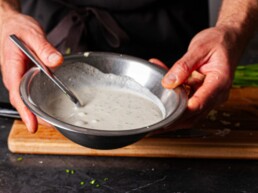We love reducing food waste! One of the best ways to do this is storing fruits and veggies properly. The best place to store all produce is in your belly. The second best place for each item is listed here…
- Apples: Store on a cool counter or shelf for up to two weeks. For longer storage, keep in a cardboard box in the fridge.
- Avocados: Place in a paper bag (to speed up ripening, stick in apple) at room temp.
- Bananas: Keep at room temperature, separate from other fruits
- Beets: Wash, cut tops off, and place in an open container with a wet towel on top.
- Berries: Place in a shallow, airtight container with a paper towel in the bottom to absorb excess moisture. Store in the fridge for up to a week.
– Don’t forget, they’re fragile! When storing be careful not to stack too many high, a single layer if possible.
-Immediately discard any soft or over-ripe berries. They will cause nearby berries to spoil faster.
-Only wash when you are ready to eat them.
– To freeze: wash berries and pat dry, and store in an airtight container in the freezer. - Carrots: The key to long-lasting carrots is storing them in a sealed container covered with a water bath (it really does work!)
– Will keep in the fridge this way for 1 – 2 weeks and maintain crispness.
– If consuming within a few days, can store in the crisper wrapped in a damp paper towel.
– Cut the tops off to keep carrots firm (be sure to keep the greens!)
– Leaving any top on root vegetables draws moisture from the root, making them loose flavor and firmness. - Cauliflower: These beauties will last a while in a closed container in the fridge, but they say cauliflower has the best flavor the day it’s bought.
- Cilantro: Try one of these three methods:
1) cilantro in a jar on the counter with water
2) cilantro in a jar in the refrigerator with a bag over the leaves
3) cilantro with the stems trimmed in an airtight container in the refrigerator. - Citrus: If ripe and ready to eat, only keep them stored at room temperature for three to four days at most. If still slightly green, they can be left out for roughly a week. Refrigerate if you aren’t planning to eat in the first 3-4 days.
- Fresh Herbs: Remove any ties or bands before doing one of the following:
– You can treat herbs like a bouquet and place them in water and set them out on a table.
– You can also wrap them in a paper towel and store in a sealed plastic bag in the fridge.
– All herbs can also be dried: simply separate the stems, lay them out on a dry surface and turn every few days until crisp. - Green Beans: Store unwashed fresh beans in a reusable container or plastic bag in the refrigerator crisper. Whole beans using this storage tip keep for about seven days.
– To freeze: Rinse your green beans in cool water and then drain. Cut the ends then store. - Lettuce: Keep damp in air tight container or bag and store in crisper drawer. Do not wash until ready to eat.
- Mushrooms: The best way to store mushrooms is to keep them in the refrigerator in a loosely closed paper bag. Fresh for about one week.
– Dried mushrooms should be stored in a tightly sealed container in either the refrigerator or freezer where they will stay fresh for six months to one year. - Potatoes: Store in cool, dark and dry place, such as a box in a dark corner of the pantry; a paper bag also works well.
- Radishes: Trim and place them in the refrigerator crisper drawer, loosely sealed in a plastic bag with a damp paper towel.
– Leave about 1/2- 1 inch of the stem intact. Your vegetables will look like they’ve all had buzz cuts.
– Put the greens in a loosely sealed plastic bag in the fridge for up to a week. They should be totally dry. Don’t wash them until you are ready to use them. - Summer Squash: Store unwashed in a plastic bag, and only wash just before eating. Use squash within 3-5 days.
- Sweet Potatoes: Store in cool, dark and dry place, such as, a box in a dark corner of the pantry; a paper bag also works well.
Good to know…
Fresh Harvest food storage information is drawn from multiple sources. A primary source is the food safety research conducted by U.S. government agencies, including the United States Department of Agriculture, the U.S. Food & Drug Administration and the U.S. Centers for Disease Control and Prevention.




